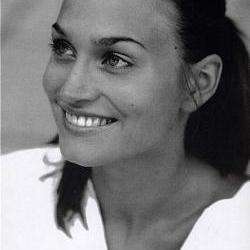Dominique Meyer is on his way out the door as Director of the Wiener Staatsoper, but if this production is any indication his swansong will be a beautiful one. To kick off his final season, the house has mounted a Midsummer Night’s Dream which is one of the best productions to come out of the Haus am Ring for a good long time. Not as long as the last time this opera, based on Shakespeare and reworked by Benjamin Britten and Peter Pears, had its day here — which was somehow back in 1962 — but all good things are worth waiting for.
What is so excellent? Let’s start with the production, brainchild of Irina Brook, who knows her way around Shakespeare and opera. Brook has created a production both self-aware and completely natural in affect; the intricate Personenregie feels effortless and natural, refusing to take itself too seriously. There are lighthearted moments, including the visible disgust of the fairies, clad in sparkly hoodies (costuming by Magali Castellan), who turn into adolescent boys at the sight of adults demonstrating their affection, or moments of the third act play which are horrendously awful — and therefore comedy gold. Though a technical production — involving aerial rigging, Cyr wheel, mounted ladders and a moving sofa — there is a seeming simplicity to the storytelling that resonates, despite mixing the world of the magical with four modern boarding high-schoolers. In short, it manages to be innovative, without feeling contrived, a difficult path to navigate.
The atmospheric stage design (Noëlle Ginefri-Corbel) consists of a single set: a ruined rococo palace, overgrown with ivy, flowers and fairies lurking just out of sight. A piano lit with candles and a sofa are the sole remaining furnishings, and the lighting (Jean Kalman) is warm and welcoming. Green dominates, from tartan schoolgirl skirts, to Puck’s hair, to the foliage creeping in; even politically, with fairies holding signs reading “Save the trees” and “Save our fairies”.
And then there is the casting which is, by and large, superb. An absolute standout was the French physical artist/actor Théo Touvet (Puck). Trained in a variety of movement disciplines including dance, acrobatics and other circus styles, his movement, whether hand-balancing, flipping, dancing or crawling were full of otherworldly lightness, and his Cyr wheel solo which led us into the intermission was hypnotic. Countertenor Lawrence Zazzo is more than at home in the role of Oberon, and possesses a vocal quality ideal for the scheming king of the fairies, simultaneously eerie and seductive. Likewise coloratura Erin Morley (Tytania), who tosses off Britten’s angular and occasionally awkwardly intervallic riffs with impossible ease and sparkling accuracy. Then comes the quartet of confused lovers, in boarding school garb which still somehow blended perfectly with the romantic backdrop: Lysander (Josh Lovell), Demetrius (Rafael Fingerlos), Hermia (Rachel Frenkel) and Helena (Valentina Naforniţǎ), all of whom sang beautifully; likewise Peter Kellner (Theseus) and Szilvia Vörös (Hippolyta), who were both vocally underchallenged in these small roles.
The sextet of Mechanicals, here clad as workers, in coveralls and makeshift costumes, emerged as three-dimensional comedic figures during the final act, not an easy task. Comedy is difficult, but Wolfgang Bankl (Quince), Benjamin Hulett (Flute), Thomas Ebenstein (Snout), Clemens Unterreiner (Starveling) and William Thomas (Snug) were both vocally and physically charming. Ebenstein, fabulously camp in his role during the play-within-the-play as “Wall”, and Hulett’s cross-dressing appearance as Thisbe were highlights. Likewise Peter Rose’s portrayal of Bottom, which was consistently effective vocally and physically, and occasionally very funny indeed. Applause as well is due the masses of young boys plucked from the opera school and transformed into shimmering fairies. They managed choreography beyond their years and negotiated Britten’s less-than-straightforward vocal requirements admirably.
Simone Young was masterful at the helm of the Wiener Staatsopernorchester and it certainly seemed like they had plenty of fun with Britten’s colorful orchestration — from the harps, celestas and cembalo who color the fairies’ music to the percussion and trumpet-heavy introduction of Puck, to all the effects that make these constructed worlds within worlds within worlds mysterious, regal, hilarious, terrifying or ridiculous. If I had one bone to pick about the production, it would center around diction. While indeed a large part of the cast employed admirable attention to enunciating their text effectively, this only highlighted what was sometimes wanting from Fingerlos and nonexistent from Naforniţǎ, whose resplendent instrument works without any apparent use for consonants. But perhaps this is expecting too much from a production which really offers so much. Hats off, Staatsoper, to a magical start to the season!




